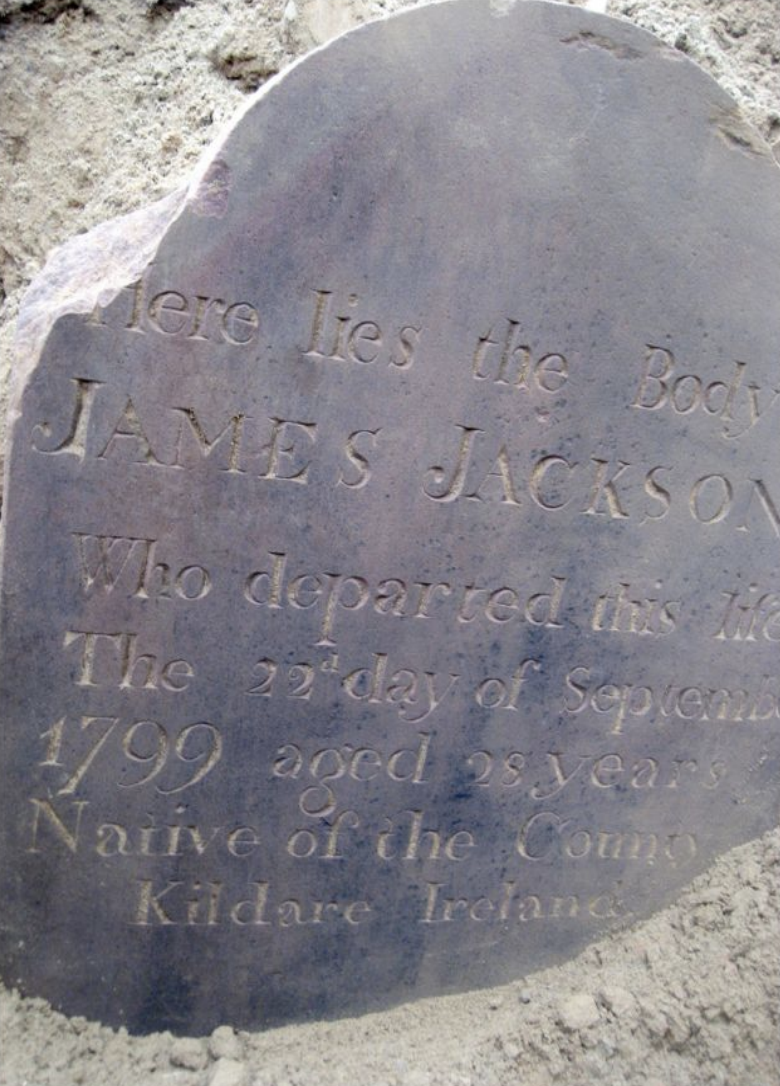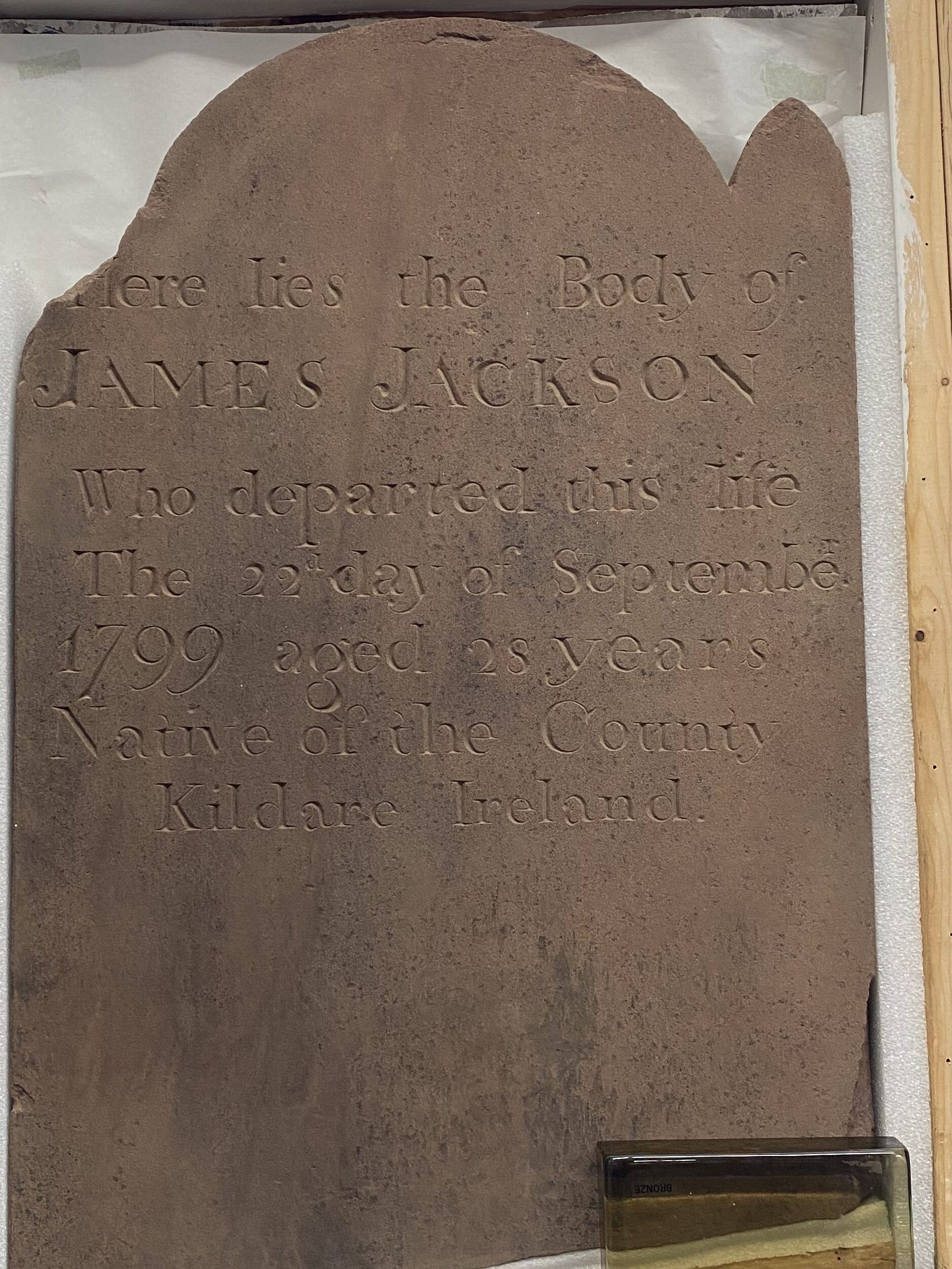Uncovering a Piece of History

224 years ago, New York City was in a situation many of us may find familiar today. An epidemic (yellow fever, not COVID-19) was ripping through the streets, claiming the lives of thousands of New Yorkers. Many of these victims were laid to rest in public burial grounds known as potter’s fields; and a large portion of the land we now call Washington Square Park served as one of those fields. Approximately 20,000 souls, many of them victims of yellow fever, were buried here.
One of them was a young Irish immigrant named James Jackson. James was born in County Kildare and lived in Greenwich Village at 19 East George (Market street today). He was gainfully employed as a watchman and was only 28 years old when he succumbed to yellow fever on September 22, 1799.
But why do we know so much about James, who was just one of thousands of unfortunate victims? It’s all thanks to a unique discovery made back in 2009–James’ headstone. During the archeological testing that took place prior to the 2012 renovation of Washington Square Park, city workers discovered the nearly 3-foot large sandstone marker. At the time when James was laid to rest, potter’s fields were mainly utilized for the unidentified and the indigent, who were placed in unmarked graves. However, for a brief time there was a public directive that required yellow fever victims to be buried in the Washington Square potter’s field. The discovery of the headstone is unique and it’s the only one ever found in the Park (although fragmentary human remains were unearthed at a similar time and were re-interred in 2021). The why of the stone’s existence is still a mystery, but one we’re lucky to have.

The headstone, which can now be seen in its permanent new home in the Washington Square Park House window, is a tangible reminder of the long and varied history of this treasured open space. In 1825, more than two decades after James’ death, the potter’s field was converted into a parade ground and eventually in 1827 it officially became a public Park. That’s a long and no-so-cheerful beginning to a place that’s now so beloved. But there is a common thread we can trace all the way back, in one way or another, that this land has been serving New York and New Yorkers for generations. And it will do so for generations to come.

